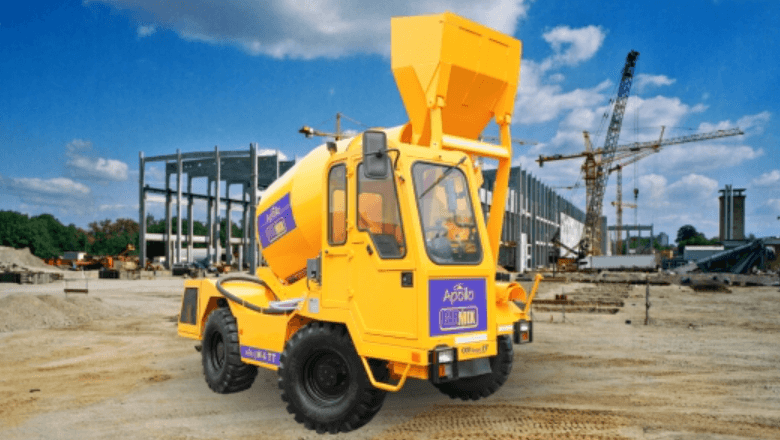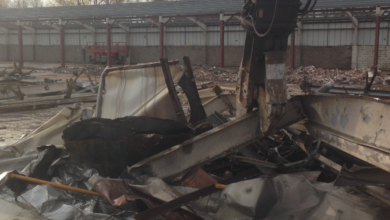self loading mixer: Enhancing Profitability and Quality Assurance in Modern Construction

In today’s fast-paced construction environment, maintaining profitability while ensuring consistent quality is a tightrope that many contractors must walk. Rising material costs, labor shortages, and stricter quality controls are pushing businesses to adopt smarter equipment and technologies. One machine that has steadily gained traction for addressing both financial and quality challenges is the self loading mixer.
The self loading mixer is not just a machine—it is a modern construction solution that improves productivity, reduces operational costs, and ensures consistent concrete quality across projects. By combining the roles of loader, mixer, transporter, and concrete placer in one mobile unit, this compact machine streamlines operations and drives better returns.
This article explores how the self loading mixer supports both profitability and quality assurance, making it an indispensable tool for forward-thinking contractors.
What Is a self loading mixer?
A self loading mixer is an all-in-one mobile concrete production machine equipped with the following:
- Hydraulic shovel for loading materials (sand, cement, aggregates)
- Digital batching system to weigh raw ingredients precisely
- Onboard rotating drum to mix concrete while moving
- Water tank and dosing system to control mix consistency
- 360-degree drum rotation for easy and flexible concrete discharge
It’s a compact, self-contained concrete batching plant that requires minimal human input, making it highly cost-effective and ideal for various construction scales.
See also: Finding Quality Massage Wherever Your Business Takes You
The Link Between self loading mixer and Profitability
1. Reduced Labor Costs
One operator can manage the entire process—from loading to mixing to discharging—eliminating the need for multiple workers and specialized drivers.
3. Lower Material Waste
Accurate batching ensures you only use what’s needed. Digital weighing systems help prevent overuse or underuse of materials, which not only saves money but also keeps quality in check.
4. Improved Project Timelines
Time is money. Faster concrete production leads to quicker slab laying and formwork removal, accelerating project completion and freeing up resources for the next job.
5. Greater Equipment ROI
Unlike traditional mixers, which require additional loaders, pumps, and trucks, a self loading mixer covers all these roles, offering high return on investment over its lifespan.
✅ On-Site Batching and Mixing
Concrete is made fresh, directly at the site, which means no setting during transit and no compromise in strength or workability.
✅ Precise Material Control
The onboard scale ensures exact proportions of materials, avoiding inconsistent mixes that can weaken structures.
✅ Moisture Control
Built-in water tanks and flow meters maintain the correct water-cement ratio, a key factor in achieving desired compressive strength.
✅ Automated Mixing Cycle
Mixing time and drum speed can be programmed, eliminating guesswork and ensuring homogeneity.
✅ Consistency Across Batches
Since the same equipment and settings are used throughout the project, the resulting concrete remains uniform—critical for structural reliability and finish.
Real-Life Impact: Quality and Profit in Tandem
Let’s consider a mid-sized builder working on a government-funded school project in a suburban area. Previously, they experienced:
- Delays due to ready-mix delivery failures
- Variations in concrete quality
- Extra costs due to rework and rejected batches
After switching to a self loading mixer (3.5 m³ capacity):
- Concrete costs dropped by 20% due to better control
- Timeline shortened by 18 days
- Inspection clearances were passed on first review due to batch uniformity
- Company took on two new projects in the same quarter due to resource availability
This case demonstrates that profitability and quality go hand-in-hand with the right tools.
Ideal Applications for Quality-Focused Projects
The Self Loading Mixer is not limited to basic concrete work. It can be used for:
- Structural foundations
- Slab-on-grade applications
- Columns, beams, and retaining walls
- RCC roadwork
- Precast production
- Driveways, curbs, and paving
For each of these, the assurance of mix quality translates directly into reduced liability, fewer quality disputes, and improved client satisfaction.
Maintenance: Keeping Profitability and Quality in Check
Profitability depends not only on performance but also on uptime. Regular maintenance of your self loading mixer ensures both output and quality remain at expected levels.
Daily checks include:
- Drum cleanliness
- Tire pressure
- Fuel and oil levels
- Hose and hydraulic system inspection
Weekly tasks include:
- Calibrating digital scales
- Checking mixing blades for wear
- Monitoring water system functionality
Choosing the Right Mixer for Business Needs
| Business Type | Recommended Drum Capacity |
| Home Builders | 1.2 – 2.0 m³ |
| Commercial Contractors | 2.5 – 4.0 m³ |
| Precast Plant Operators | 4.0 – 5.5 m³ |
Manufacturers like Daswell, Ajax, Carmix, and Fiori offer models suited to different business scales, each with specific features aligned with quality production.
Final Thoughts: Build Smarter, Not Harder
Modern construction is no longer about doing more with less—it’s about doing better with smarter tools. The self loading mixer exemplifies this shift. It empowers companies to deliver consistent concrete quality while reducing costs, labor, and project duration.
For builders who want to maximize their reputation, profitability, and project outcomes, the self loading mixer isn’t just a piece of equipment—it’s a strategic asset.
Whether you’re handling residential projects, infrastructure jobs, or commercial builds, investing in this technology sets your business up for sustainable success in both financial and quality metrics.





